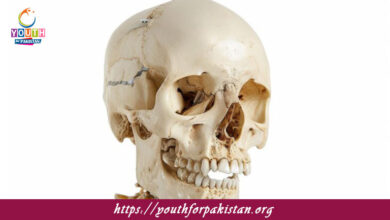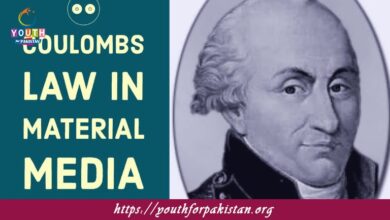Glycolysis Glycolytic Pathway Aerobic Respiration MDCAT MCQs
Welcome to the Glycolysis Glycolytic Pathway Aerobic Respiration MDCAT MCQs with Answers. In this post, we have shared Glycolysis Glycolytic Pathway Aerobic Respiration Multiple Choice Questions and Answers for PMC MDCAT 2024. Each question in MDCAT Biology offers a chance to enhance your knowledge regarding Glycolysis Glycolytic Pathway Aerobic Respiration MCQs in this MDCAT Online Test.
What is the primary function of glycolysis?
a) To produce ATP and NADH from glucose
b) To convert glucose into fatty acids
c) To fix carbon dioxide
d) To synthesize proteins
Where does glycolysis occur in the cell?
a) Mitochondria
b) Nucleus
c) Cytoplasm
d) Endoplasmic reticulum
Which molecule is the starting substrate of glycolysis?
a) Glucose
b) Pyruvate
c) Acetyl-CoA
d) NADH
How many molecules of ATP are produced directly from glycolysis?
a) 1
b) 2
c) 3
d) 4
What is the end product of glycolysis?
a) Glucose
b) Pyruvate
c) Acetyl-CoA
d) ATP
Which enzyme catalyzes the conversion of glucose to glucose-6-phosphate in glycolysis?
a) Hexokinase
b) Phosphofructokinase
c) Pyruvate kinase
d) Aldolase
What is the role of phosphofructokinase in glycolysis?
a) To convert glucose to glucose-6-phosphate
b) To convert fructose-6-phosphate to fructose-1,6-bisphosphate
c) To convert pyruvate to acetyl-CoA
d) To produce ATP from ADP
How many NADH molecules are produced during glycolysis?
a) 1
b) 2
c) 3
d) 4
In the presence of oxygen, what happens to pyruvate after glycolysis?
a) It is converted to lactate
b) It is converted to ethanol
c) It enters the mitochondria and is converted to acetyl-CoA
d) It remains in the cytoplasm
What is the net gain of ATP in glycolysis?
a) 1
b) 2
c) 3
d) 4
Which molecule is a byproduct of glycolysis under anaerobic conditions?
a) Acetyl-CoA
b) Lactate
c) Carbon dioxide
d) Ethanol
Which process is directly linked to glycolysis in aerobic respiration?
a) Citric acid cycle
b) Electron transport chain
c) Krebs cycle
d) Pyruvate oxidation
What is the role of the enzyme pyruvate kinase in glycolysis?
a) To convert phosphoenolpyruvate to pyruvate
b) To convert glucose to glucose-6-phosphate
c) To convert fructose-6-phosphate to fructose-1,6-bisphosphate
d) To convert NADH to NAD+
How many molecules of water are produced during glycolysis?
a) 1
b) 2
c) 3
d) 4
Which stage of glycolysis consumes ATP?
a) Energy investment phase
b) Energy payoff phase
c) Both phases
d) Neither phase
What is the primary function of the electron transport chain in aerobic respiration?
a) To produce ATP
b) To produce pyruvate
c) To oxidize NADH and FADH2
d) To convert glucose to glucose-6-phosphate
Which enzyme is responsible for the formation of acetyl-CoA from pyruvate?
a) Pyruvate dehydrogenase
b) Citrate synthase
c) Succinate dehydrogenase
d) Isocitrate dehydrogenase
Where does the citric acid cycle (Krebs cycle) occur?
a) Cytoplasm
b) Mitochondrial matrix
c) Thylakoid membrane
d) Endoplasmic reticulum
How many ATP molecules are produced per glucose molecule in glycolysis?
a) 1
b) 2
c) 4
d) 6
Which molecule is not a direct product of glycolysis?
a) Pyruvate
b) ATP
c) NADH
d) Acetyl-CoA
What role does oxygen play in aerobic respiration?
a) It is a substrate for glycolysis
b) It acts as a final electron acceptor in the electron transport chain
c) It is converted to lactate
d) It is involved in the formation of ATP
How many ATP molecules are produced through oxidative phosphorylation per glucose molecule?
a) 2
b) 4
c) 32
d) 36
Which intermediate is produced by the decarboxylation of pyruvate?
a) Acetyl-CoA
b) Oxaloacetate
c) Malate
d) Citrate
Which process produces the most ATP in cellular respiration?
a) Glycolysis
b) Citric acid cycle
c) Electron transport chain
d) Pyruvate oxidation
What is the primary role of NADH in aerobic respiration?
a) To transport electrons to the electron transport chain
b) To convert glucose to pyruvate
c) To produce ATP directly
d) To fix carbon dioxide
Which of the following is a byproduct of the citric acid cycle?
a) Lactate
b) Ethanol
c) Carbon dioxide
d) Glucose
In glycolysis, what is the role of aldolase?
a) To convert fructose-1,6-bisphosphate to dihydroxyacetone phosphate and glyceraldehyde-3-phosphate
b) To convert pyruvate to acetyl-CoA
c) To convert glucose to glucose-6-phosphate
d) To convert phosphoenolpyruvate to pyruvate
What is the primary purpose of fermentation in the absence of oxygen?
a) To produce ATP through the electron transport chain
b) To regenerate NAD+ from NADH
c) To produce glucose
d) To convert pyruvate to acetyl-CoA
Which intermediate of glycolysis is converted to pyruvate?
a) Fructose-6-phosphate
b) 1,3-Bisphosphoglycerate
c) Phosphoenolpyruvate
d) Dihydroxyacetone phosphate
What happens to the energy released during the electron transport chain?
a) It is used to create a proton gradient across the mitochondrial membrane
b) It is used to fix carbon dioxide
c) It is used to synthesize glucose
d) It is stored as NADH
Which enzyme catalyzes the conversion of 1,3-bisphosphoglycerate to 3-phosphoglycerate in glycolysis?
a) Phosphoglycerate kinase
b) Phosphofructokinase
c) Aldolase
d) Enolase
How many molecules of CO2 are produced from one glucose molecule during aerobic respiration?
a) 2
b) 4
c) 6
d) 8
Which molecule is the final electron acceptor in the electron transport chain?
a) NAD+
b) FAD
c) Oxygen
d) Carbon dioxide
Which process involves the breakdown of glucose to produce energy without oxygen?
a) Aerobic respiration
b) Glycolysis
c) Fermentation
d) Citric acid cycle
What is the role of ATP synthase in aerobic respiration?
a) To produce ATP from ADP and inorganic phosphate
b) To convert pyruvate to acetyl-CoA
c) To transport electrons across the mitochondrial membrane
d) To generate NADH
How many molecules of NADH are produced from one glucose molecule during glycolysis?
a) 1
b) 2
c) 3
d) 4
What is the net gain of NADH during glycolysis?
a) 1
b) 2
c) 3
d) 4
In which stage of cellular respiration is ATP synthesized directly through substrate-level phosphorylation?
a) Glycolysis
b) Citric acid cycle
c) Electron transport chain
d) Both a and b
Which process generates the most ATP in cellular respiration?
a) Glycolysis
b) Citric acid cycle
c) Oxidative phosphorylation
d) Pyruvate oxidation
What is the role of the citric acid cycle in aerobic respiration?
a) To produce NADH and FADH2
b) To produce ATP directly
c) To convert glucose into pyruvate
d) To convert NADH to NAD+
Which intermediate of glycolysis is converted to 1,3-bisphosphoglycerate?
a) Glucose-6-phosphate
b) Fructose-1,6-bisphosphate
c) Glyceraldehyde-3-phosphate
d) Dihydroxyacetone phosphate
Which molecule is produced during the energy payoff phase of glycolysis?
a) Glucose
b) Pyruvate
c) ATP
d) Lactate
What happens to the pyruvate produced in glycolysis under anaerobic conditions?
a) It enters the mitochondria
b) It is converted to lactate or ethanol
c) It is converted to acetyl-CoA
d) It is used to produce ATP directly
Which enzyme in glycolysis is responsible for the conversion of 3-phosphoglycerate to 2-phosphoglycerate?
a) Enolase
b) Phosphoglycerate mutase
c) Phosphofructokinase
d) Hexokinase
If you are interested to enhance your knowledge regarding Physics, Chemistry, Computer, and Biology please click on the link of each category, you will be redirected to dedicated website for each category.





